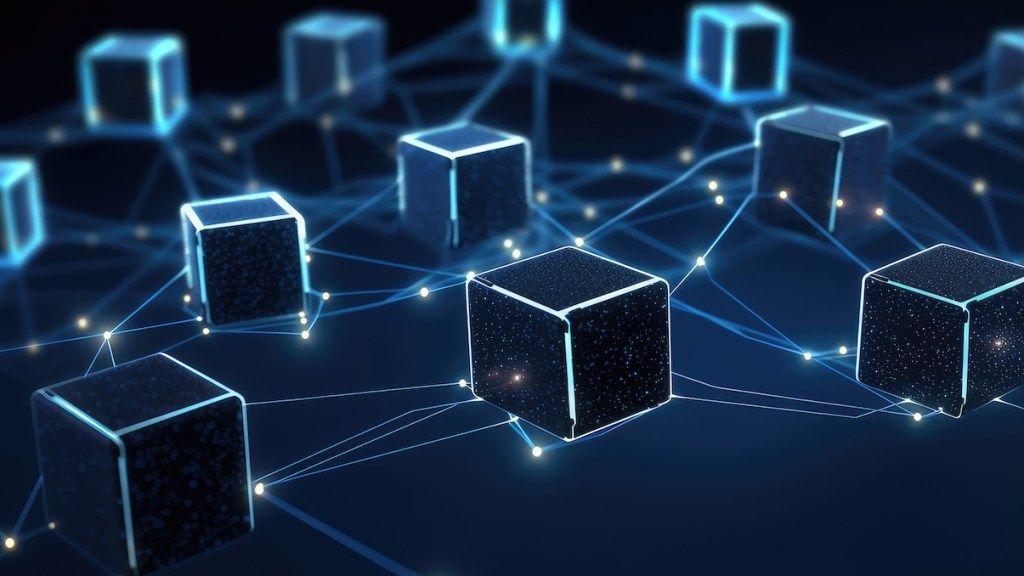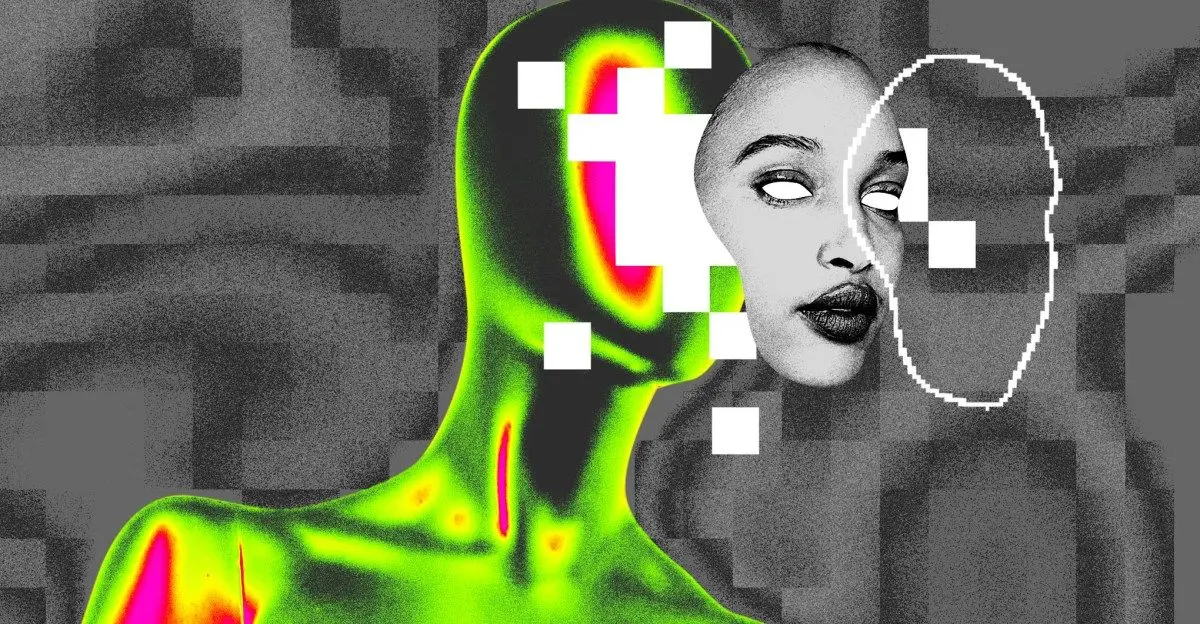Model Context Protocol: Bridging the Gap Between AI Models and Real-World Applications
3 Sources
3 Sources
[1]
Model Context Protocol: A promising AI integration layer, but not a standard (yet)
Join our daily and weekly newsletters for the latest updates and exclusive content on industry-leading AI coverage. Learn More In the past couple of years as AI systems have become more capable of not just generating text, but taking actions, making decisions and integrating with enterprise systems, they have come with additional complexities. Each AI model has its own proprietary way of interfacing with other software. Every system added creates another integration jam, and IT teams are spending more time connecting systems than using them. This integration tax is not unique: It's the hidden cost of today's fragmented AI landscape. Anthropic's Model Context Protocol (MCP) is one of the first attempts to fill this gap. It proposes a clean, stateless protocol for how large language models (LLMs) can discover and invoke external tools with consistent interfaces and minimal developer friction. This has the potential to transform isolated AI capabilities into composable, enterprise-ready workflows. In turn, it could make integrations standardized and simpler. Is it the panacea we need? Before we delve in, let us first understand what MCP is all about. The case for MCP: Building a common dialect between models and tools Right now, tool integration in LLM-powered systems is ad hoc at best. Each agent framework, each plugin system and each model vendor tend to define their own way of handling tool invocation. This is leading to reduced portability. MCP offers a refreshing alternative: If adopted widely, MCP could make AI tools discoverable, modular and interoperable, similar to what REST (REpresentational State Transfer) and OpenAPI did for web services. Why MCP is not (yet) a standard While MCP is an open-source protocol developed by Anthropic and has recently gained traction, it is important to recognize what it is -- and what it is not. MCP is not yet a formal industry standard. Despite its open nature and rising adoption, it is still maintained and guided by a single vendor, primarily designed around the Claude model family. A true standard requires more than just open access. There should be an independent governance group, representation from multiple stakeholders and a formal consortium to oversee its evolution, versioning and any dispute resolution. None of these elements are in place for MCP today. This distinction is more than technical. In recent enterprise implementation projects involving task orchestration, document processing and quote automation, the absence of a shared tool interface layer has surfaced repeatedly as a friction point. Teams are forced to develop adapters or duplicate logic across systems, which leads to higher complexity and increased costs. Without a neutral, broadly accepted protocol, that complexity is unlikely to decrease. This is particularly relevant in today's fragmented AI landscape, where multiple vendors are exploring their own proprietary or parallel protocols. For example, Google has announced its Agent2Agent protocol, while IBM is developing its own Agent Communication Protocol. Without coordinated efforts, there is a real risk of the ecosystem splintering -- rather than converging, making interoperability and long-term stability harder to achieve. Meanwhile, MCP itself is still evolving, with its specifications, security practices and implementation guidance being actively refined. Early adopters have noted challenges around developer experience, tool integration and robust security, none of which are trivial for enterprise-grade systems. In this context, enterprises must be cautious. While MCP presents a promising direction, mission-critical systems demand predictability, stability and interoperability, which are best delivered by mature, community-driven standards. Protocols governed by a neutral body ensure long-term investment protection, safeguarding adopters from unilateral changes or strategic pivots by any single vendor. For organizations evaluating MCP today, this raises a crucial question -- how do you embrace innovation without locking into uncertainty? The next step isn't to reject MCP, but to engage with it strategically: Experiment where it adds value, isolate dependencies and prepare for a multi-protocol future that may still be in flux. What tech leaders should watch for While experimenting with MCP makes sense, especially for those already using Claude, full-scale adoption requires a more strategic lens. Here are a few considerations: 1. Vendor lock-in If your tools are MCP-specific, and only Anthropic supports MCP, you are tied to their stack. That limits flexibility as multi-model strategies become more common. 2. Security implications Letting LLMs invoke tools autonomously is powerful and dangerous. Without guardrails like scoped permissions, output validation and fine-grained authorization, a poorly scoped tool could expose systems to manipulation or error. 3. Observability gaps The "reasoning" behind tool use is implicit in the model's output. That makes debugging harder. Logging, monitoring and transparency tooling will be essential for enterprise use. Tool ecosystem lag Most tools today are not MCP-aware. Organizations may need to rework their APIs to be compliant or build middleware adapters to bridge the gap. Strategic recommendations If you are building agent-based products, MCP is worth tracking. Adoption should be staged: These steps preserve flexibility while encouraging architectural practices aligned with future convergence. Why this conversation matters Based on experience in enterprise environments, one pattern is clear: The lack of standardized model-to-tool interfaces slows down adoption, increases integration costs and creates operational risk. The idea behind MCP is that models should speak a consistent language to tools. Prima facie: This is not just a good idea, but a necessary one. It is a foundational layer for how future AI systems will coordinate, execute and reason in real-world workflows. The road to widespread adoption is neither guaranteed nor without risk. Whether MCP becomes that standard remains to be seen. But the conversation it is sparking is one the industry can no longer avoid.
[2]
AI's big interoperability moment: Why A2A and MCP are key for agent collaboration
AI agents are approaching the kind of breakthrough moment that APIs had in the early 2010s. At that time, REST and JSON unlocked system-to-system integration at scale by simplifying what had been a tangle of SOAP, WSDL, and tightly coupled web services. That change didn't just make developers more productive; it enabled entire business ecosystems built around modular software. A similar shift is underway in artificial intelligence. As agents become more capable and specialized, enterprises are discovering that coordination is the next big challenge. Two open protocols -- Agent-to-Agent (A2A) and Model Context Protocol (MCP) -- are emerging to meet that need. They simplify how agents share tasks, exchange information, and access enterprise context, even when they were built using different models or tools. These protocols are more than technical conveniences. They are foundational to scaling intelligent software across real-world workflows. Why interoperability between agents and tools matters now AI systems are moving beyond general-purpose copilots. In practice, most enterprises are designing agents to specialize: managing inventory, handling returns, optimizing routes, or processing approvals. Value comes not only from their intelligence, but from how these agents work together. A2A provides the mechanism for agents to interact across systems. It allows agents to advertise their capabilities, discover others, and send structured requests. Built on JSON-RPC and OpenAPI-style authentication, A2A supports stateless communication between agents, making it simpler and more secure to run multi-agent workflows at scale. MCP is another protocol that is empowering AI agents with seamless access to essential tools, comprehensive data, and relevant context. It provides a standardized framework for connecting to diverse enterprise systems. Once an MCP Server is established by a service provider, its full functionality becomes universally accessible to all agents, enabling more intelligent and coordinated actions across the ecosystem. These protocols don't require organizations to build or glue systems together manually. They make it possible to adopt a shared foundation for AI collaboration that works across the ecosystem. Why it's gaining traction quickly Google Cloud initiated A2A as an open standard and published its draft in the open, encouraging contributions from across the industry. More than 50 partners have participated in its evolution, including Salesforce, Deloitte, and UiPath. Microsoft now supports A2A in Azure AI Foundry and Copilot Studio; SAP has integrated A2A into its Joule assistant. Other examples are emerging across the ecosystem. Zoom is using A2A to facilitate cross-agent interactions in its open platform. Box and Auth0 are demonstrating how enterprise authentication can be handled across agents using standardized identity flows. This kind of participation is helping the protocol mature quickly, both in specification and in tooling. The Python A2A SDK is stable and production-ready. Google Cloud has also released the Java Agent Development Kit to broaden support for enterprise development teams. Renault Group is among the early adopters already deploying these tools. Multi-agent workflows unlock new enterprise use cases The transition from standalone agents to coordinated systems is already underway. Imagine a scenario where a customer service agent receives a request. It uses A2A to check with an inventory agent about product availability. It then consults a logistics agent to recommend a shipping timeline. If needed, it loops in a finance agent to issue a refund. Each of these agents may be built using different models, toolkits, or platforms -- but they can interoperate through A2A and MCP. In more advanced settings, this pattern enables use cases like live operations management. For example, an AI agent monitoring video streams at a theme park could coordinate with operations agents to adjust staff allocation based on real-time crowd conditions. Video, sensor, and ticketing data can be made available through tools like BigLake metastore and accessed by agents through MCP. Decisions are made and executed across agents, with minimal need for human orchestration. Architecturally, this is a new abstraction layer MCP and A2A represent more than messaging protocols. They are part of a broader shift toward clean, open abstractions in enterprise software. These agent protocols decouple intelligence from integration. With MCP, developers don't need to hand-code API access for every data source. With A2A, they don't need to maintain brittle logic for how agents interact. The result is a more maintainable, secure, and portable approach to building intelligent multi-agent systems -- one that scales across business units and platforms. Google Cloud's investment in open agent standards Google Cloud's contributions to the ecosystem are both foundational and practical. We are working with Anthropic on MCP and we have released A2A as open specification and backed them with production-grade tooling. These protocols are deeply integrated into our AI platforms, including Vertex AI, where multi-agent workflows can be developed and managed directly. It is great to see other cloud providers embracing MCP and A2A standards. By releasing the Agent Development Kit for both Python and Java, and by making these components modular and extensible, Google Cloud is now enabling teams to adopt these standards without needing to reinvent infrastructure. The Agent Development Kit will also soon feature built-in tools to access the data in BigQuery, making it easy to build your own agents backed by your enterprise data. We are committed to enable you to access BigQuery, AlloyDB, and other GCP data services via MCP and A2A protocols. You can get started by using MCP Toolbox for Databases today and open your database queries as MCP tools. We are continuously adding more tools via MCP to enable developers to build even more sophisticated agents using the native capabilities of BigQuery. Why this is worth tracking closely For organizations investing in AI agents today, interoperability is going to matter more with each passing quarter. Systems built around isolated agents will struggle to scale; systems built on shared protocols will be more agile, collaborative, and future-proof. This transition echoes the rise of APIs in the last decade. REST and JSON didn't just improve efficiency, they became the foundation of modern cloud applications. MCP and A2A are poised to do the same for AI agents. Adopting these protocols doesn't require a full system rebuild. The point is to create flexibility: to allow agents developed internally or by vendors to collaborate and operate with context, using standards that are already gaining support across the industry. For companies evaluating their AI stack, it's worth asking whether their agents will be able to talk to each other -- and what happens when they can't.
[3]
Why MCP is the Key to Unlocking AI's Full Potential in 2025
What if artificial intelligence could not only understand your needs but also act on them autonomously, seamlessly integrating with the tools and systems you rely on every day? This isn't a distant dream -- it's the promise of the Model Context Protocol (MCP). While many AI systems today excel at generating insights or processing data, they often fall short when it comes to taking meaningful, real-world actions. MCP changes the game by providing a structured framework that connects AI models to external tools, APIs, and data sources, allowing them to operate in dynamic environments. In a world where businesses demand more than just passive AI, MCP emerges as a fantastic solution, bridging the gap between potential and practical application. In this exploration, Tim Berglund explains why MCP is more than just another AI framework -- it's a cornerstone for agentic AI systems that can act independently and deliver tangible results. You'll learn how its modular and pluggable architecture enables organizations to build scalable, adaptable AI solutions that evolve alongside their needs. From scheduling meetings autonomously to integrating with complex enterprise systems, MCP unlocks new possibilities for intelligent applications. But what makes it truly innovative is its ability to shift AI from being a passive assistant to an active problem solver. As we delve into its architecture, features, and real-world applications, you'll discover why MCP isn't just a big deal -- it's a glimpse into the future of AI-driven innovation. Agentic AI systems are designed to go beyond passive responses, allowing them to take meaningful actions. For example, instead of merely suggesting a meeting time, an agentic AI system can autonomously schedule the meeting by interacting with a calendar API. This ability to act independently is critical for real-world applications where AI must deliver tangible results. Despite their capabilities, foundational AI models are inherently limited. They excel at generating text or processing data but lack the ability to dynamically access external tools or data sources. This limitation confines them to predefined contexts, restricting their functionality. MCP addresses this challenge by providing a structured framework that connects AI systems to external resources such as APIs, databases, files, and event streams. By doing so, MCP enables AI to operate in dynamic environments and deliver actionable outcomes. At the core of MCP lies a client-server architecture that assists efficient communication between AI systems and external tools. This architecture is built around two primary components: Communication between the host application and the MCP server is achieved using JSON RPC over HTTP or Server-Sent Events (SSE). This ensures real-time, efficient interactions, which are essential for applications requiring immediate responses. By employing this architecture, MCP creates a robust framework for integrating AI systems with external tools. Take a look at other insightful guides from our broad collection that might capture your interest in Agentic AI. MCP's capabilities are best understood through practical scenarios. Consider a situation where an AI system is tasked with scheduling a meeting. Here's how MCP assists this process: This workflow highlights MCP's ability to dynamically integrate AI systems with external resources, allowing them to perform complex tasks autonomously. By bridging the gap between AI models and real-world functionality, MCP unlocks new possibilities for intelligent applications. MCP's design incorporates several core features that make it particularly suited for enterprise applications: These features make MCP a robust and adaptable framework for building AI systems that can evolve alongside organizational needs. By prioritizing flexibility and scalability, MCP ensures that AI systems remain relevant in a rapidly changing technological landscape. MCP is designed with scalability at its core, making it ideal for enterprise-level applications. Its modular architecture minimizes the need for hardcoding, allowing developers to create systems that can be easily updated or expanded. By using standardized communication protocols like JSON RPC and RESTful APIs, MCP ensures interoperability across diverse tools and platforms. For example, an enterprise could use MCP to integrate an AI-driven customer support system with multiple backend services, such as a CRM database, a ticketing system, and a real-time chat platform. Thanks to MCP's modular design, these integrations can be updated or replaced without disrupting the overall system. This adaptability ensures that the system remains functional and efficient as organizational needs evolve. The Model Context Protocol represents a pivotal advancement in the evolution of agentic AI systems. By allowing seamless integration with external tools and resources, MCP allows AI applications to perform complex, real-world tasks with precision and efficiency. Its modular, pluggable, and composable architecture makes it particularly well-suited for enterprise use cases, offering the scalability and adaptability required in today's fast-paced technological environment. For organizations aiming to harness the full potential of AI, MCP provides a powerful framework for building the next generation of intelligent applications. By bridging the gap between foundational AI models and real-world functionality, MCP positions itself as a cornerstone of future AI development, driving innovation and allowing AI to deliver meaningful, actionable outcomes.
Share
Share
Copy Link
An exploration of the Model Context Protocol (MCP), its potential to revolutionize AI integration, and its implications for enterprise-level AI applications.
The Promise of Model Context Protocol
The Model Context Protocol (MCP) is emerging as a potential game-changer in the world of artificial intelligence (AI) integration. As AI systems become increasingly capable of generating text, making decisions, and taking actions, the need for a standardized way to interface with other software has become apparent. MCP, developed by Anthropic, aims to fill this gap by providing a clean, stateless protocol for large language models (LLMs) to discover and invoke external tools with consistent interfaces
1
.The Case for MCP
Currently, tool integration in LLM-powered systems is largely ad hoc, with each agent framework, plugin system, and model vendor defining their own methods for handling tool invocation. This fragmentation leads to reduced portability and increased complexity. MCP offers a refreshing alternative by proposing a standardized approach that could make AI tools discoverable, modular, and interoperable, similar to what REST and OpenAPI did for web services
1
.MCP Architecture and Features
At its core, MCP utilizes a client-server architecture to facilitate efficient communication between AI systems and external tools. The framework consists of two primary components: the MCP client, which is integrated into the AI model, and the MCP server, which manages connections to external tools and resources
3
.Key features of MCP include:
- Modularity: Allows for easy addition or removal of tools without affecting the entire system.
- Pluggability: Supports integration with various AI models and external tools.
- Composability: Enables the creation of complex workflows by combining multiple tools.
- Standardized communication: Uses JSON RPC over HTTP or Server-Sent Events for real-time interactions
3
.
Challenges and Considerations
Despite its potential, MCP is not yet a formal industry standard. It is still maintained and guided primarily by Anthropic, designed around their Claude model family. For MCP to become a true standard, it would require an independent governance group, representation from multiple stakeholders, and a formal consortium to oversee its evolution
1
.Enterprise adoption of MCP raises several considerations:
- Vendor lock-in: Exclusive use of MCP-specific tools could tie organizations to Anthropic's stack.
- Security implications: Allowing LLMs to invoke tools autonomously requires robust security measures.
- Observability gaps: Debugging may be challenging as the reasoning behind tool use is implicit in the model's output.
- Tool ecosystem lag: Many existing tools are not yet MCP-aware, potentially requiring API rework or middleware adapters
1
.
Related Stories
The Broader Context: A2A and Interoperability
While MCP focuses on model-to-tool interactions, the Agent-to-Agent (A2A) protocol is emerging as a complementary standard for agent-to-agent communication. Initiated by Google Cloud, A2A aims to facilitate interactions between specialized AI agents across different systems
2
.
Source: VentureBeat
The combination of MCP and A2A could potentially unlock new enterprise use cases, enabling coordinated multi-agent workflows. For example, a customer service agent could use A2A to check with an inventory agent about product availability, consult a logistics agent for shipping timelines, and loop in a finance agent for refunds – all while using MCP to access necessary tools and data sources
2
.Future Implications

Source: VentureBeat
As AI continues to evolve, protocols like MCP and A2A represent a shift towards clean, open abstractions in enterprise software. They have the potential to decouple intelligence from integration, allowing for more maintainable, secure, and portable approaches to building intelligent multi-agent systems
2
.While MCP shows promise in bridging the gap between AI models and real-world applications, its success will depend on widespread adoption, continued development, and addressing the challenges of enterprise integration. As the AI landscape continues to evolve, MCP and similar protocols may play a crucial role in shaping the future of AI-driven innovation and enterprise applications.
References
Summarized by
Navi
[3]
Related Stories
Model Context Protocol (MCP): Revolutionizing AI Integration and Tool Interaction
05 Jul 2025•Technology

MCP: The New "USB-C for AI" Unifying Rivals and Revolutionizing AI Tool Integration
28 Mar 2025•Technology

Model Context Protocol emerges as the missing layer connecting Agentic AI to real-world systems
17 Dec 2025•Technology

Recent Highlights
1
Meta acquires Manus for $2 billion, adding revenue-generating AI agents to its platforms
Business and Economy

2
China proposes world's strictest AI chatbot rules to prevent suicide and emotional manipulation
Policy and Regulation

3
Deepfakes cross indistinguishable threshold as voice cloning and video realism surge 900%
Technology



